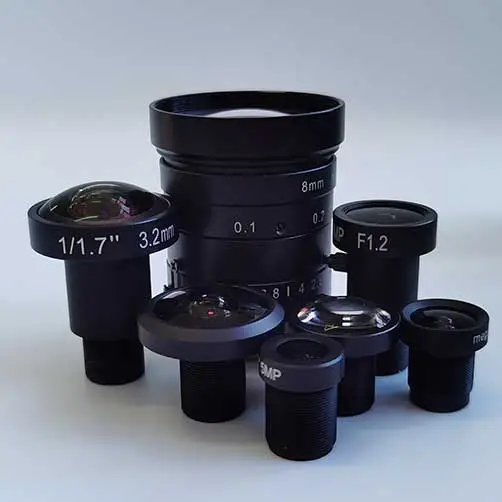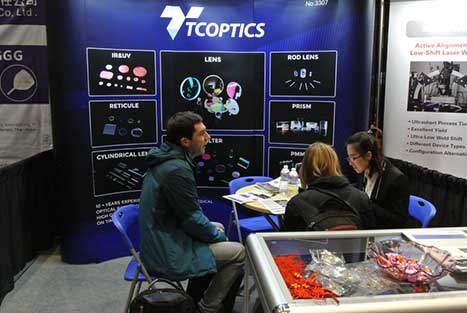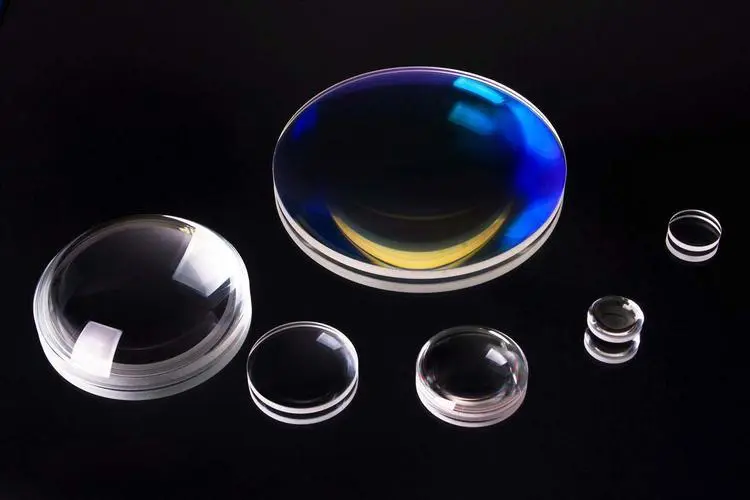
Telecentric lens is a high-end optical lens designed to correct the parallax of traditional lenses. Compared with ordinary lenses, it has absolute advantages in magnification, distortion, parallax, and resolution. Let's talk about the top ten parameters of telecentric lens selection.
1. The telecentricity of the telecentric lens
Telecentricity refers to the magnification error of an object. The smaller the magnification error, the higher the telecentricity. The telecentricity has various uses. It is very important to grasp the telecentricity before using the lens.
The main ray of the telecentric lens system is parallel to the optical axis of the lens, and the telecentricity is not good, and the use of the telecentric lens is not good;
2. Resolution of the telecentric lens (μm)
The scale of the optical system's ability, indicating that when the black and white grid pattern is observed through the lens, the maximum number of black and white stripes that can be observed in 1mm can be resolved.
The resolution is the measurement value of the closest distance between two points that can be approached before they cannot be recognized. For example, a resolution of 1 μm means that the closest distance between two points can be 1 μm before they cannot be recognized.
3. Resolution of telecentric lens (Lines/mm)
Resolution refers to the 1mm area in the image of the black-and-white network line diagram lens, the number of recognizable black-and-white stripes, and the unit of resolution is lines/mm. The width of telecentric f theta lens is 1/200mm (5μm).
4. Distortion of telecentric lens (%)
Distortion is a straight object outside the optical axis, and the lens aberration when it presents a curve. Lens distortion is also called lens distortion, which is a general term for the inherent perspective distortion of optical lenses.
It is divided into pincushion distortion and barrel distortion. The distortion of the straight line toward the center is pincushion distortion, and the distortion that expands outward is called barrel distortion.
5. Depth of field of telecentric lenses
The depth is the distance between the closest point and the farthest point where the sharpest focus occurs when the object moves back and forth from the best focus. The depth range on the object side is called the depth of field. Similarly, the range on the camera side is called the depth of focus. The specific depth of field value is slightly different.
6. The depth of focus of the telecentric lens
The depth is the distance between the closest point and the farthest point where the sharpest focus occurs when the CCD moves back and forth from the best focus. The depth range on the image side is called the depth of focus.
7. Optical magnification of telecentric lens
The magnification refers to the size of the original imaging area of the object that can be changed through the adjustment of the lens. The optical magnification is the magnification of the zoom through the optical lens. The relationship between the main point and the imaging: the magnification refers to the ratio of the imaging size to the object.
8. The resolution of the telecentric lens
Indicates the visible 2-point interval 0.61x Use wavelength (λ) / NA = resolution (μ), the above calculation method can theoretically calculate the resolution, but does not include distortion, * The wavelength used is 550nm.
9. The edge brightness of the telecentric lens
The relative illuminance refers to the percentage of the illuminance in the center to the illuminance in the periphery.
10. Zoom lens
The focal length variable lens, magnification, and shooting range can be easily changed, which is suitable for the occasions where you need to find the most suitable shooting conditions (shooting distance, focal length of the lens) for easy operation.
A telecentric zoom lens that does not move the focus position is called a zoom lens, and a lens that produces a focus position movement is called a zoom lens.


